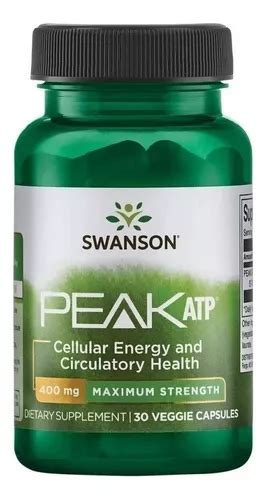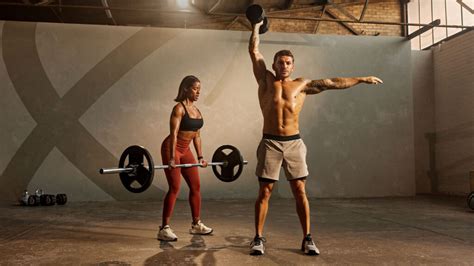How to maximize functional strength for peak male performance & daily vitality?

In the pursuit of optimal male health and performance, many focus solely on aesthetics or single-plane strength. However, true peak performance and sustained daily vitality stem from a deeper, more practical form of power: functional strength. This isn’t just about lifting heavy weights; it’s about building a body that moves efficiently, prevents injury, and excels in real-world scenarios, from demanding sports to everyday tasks.
What is Functional Strength?
Functional strength refers to the ability to perform movements that mimic real-life activities. Unlike isolation exercises that target individual muscles, functional training engages multiple muscle groups and joints simultaneously, often involving movements across various planes of motion. Think of pushing, pulling, squatting, hinging, carrying, and rotating – movements essential for navigating your environment effectively and powerfully. It’s about building strength that translates directly into better performance, reduced risk of injury, and enhanced quality of life.

Why Functional Strength is Crucial for Peak Male Performance
For men, functional strength is the cornerstone of peak performance, whether in athletic pursuits or the demands of daily life. It supports:
- Enhanced Athleticism: Improves power, agility, balance, and coordination for sports and physical activities.
- Injury Prevention: Strengthens stabilizing muscles and improves movement patterns, reducing the risk of strains, sprains, and chronic pain.
- Increased Daily Vitality: Makes everyday tasks, like lifting groceries, carrying children, or doing yard work, feel easier and less strenuous.
- Improved Longevity & Quality of Life: Maintains physical independence and capability as you age, allowing for a more active and fulfilling life.
- Better Body Composition: Compound movements burn more calories and build more muscle, contributing to a leaner, stronger physique.
Key Principles of Functional Strength Training
To maximize functional strength, your training should incorporate the following principles:
1. Compound Movements
Focus on exercises that involve multiple joints and muscle groups. Examples include squats, deadlifts, overhead presses, rows, and push-ups. These mimic natural movement patterns and build integrated strength.
2. Multi-planar Training
Our bodies move in three planes: sagittal (forward/backward), frontal (side-to-side), and transverse (rotational). Incorporate exercises that challenge all three, such as lateral lunges, rotational throws, and wood chops, to build comprehensive strength and stability.

3. Core Integration
A strong core is the foundation of all functional movement. Ensure your workouts actively engage your core through exercises like planks, bird-dogs, and anti-rotational movements, rather than just traditional crunches.
4. Progressive Overload
To continually get stronger, you must gradually increase the demands on your body. This can be done by increasing weight, reps, sets, reducing rest time, or making exercises more complex.
5. Mobility and Stability
Strength without mobility is limited. Incorporate dynamic stretches, foam rolling, and mobility drills to ensure your joints have a full range of motion, which is crucial for safe and effective functional movements.

Sample Functional Strength Exercises
Here are some highly effective exercises to incorporate into your routine:
- Kettlebell Swings: Explosive hip hinge movement that builds power and endurance.
- Goblet Squats: Improves squat mechanics and core stability.
- Farmer’s Carries: Builds grip strength, core stability, and overall muscular endurance.
- Turkish Get-Ups: A full-body exercise that enhances mobility, stability, and coordination.
- Pull-Ups/Chin-Ups: Excellent for upper body pulling strength and back development.
- Push-Ups: Fundamental upper body pushing strength and core stability.
- Walking Lunges: Develops unilateral leg strength, balance, and core stability.

Integrating Functional Strength into Your Routine
Start by replacing some isolation exercises with compound, multi-planar movements. Consider a full-body functional training routine 2-4 times per week, focusing on quality of movement over quantity of weight initially. Incorporate warm-ups that include dynamic stretches and movement preparation, and cool-downs with static stretching.
Remember that consistency and proper form are paramount. If you’re new to these types of movements, consider working with a qualified trainer to ensure you’re performing them safely and effectively.
Beyond the Gym: The Ripple Effect
The benefits of maximizing functional strength extend far beyond your workout. You’ll find yourself with more energy throughout the day, improved posture, reduced aches and pains, and a greater sense of confidence in your physical capabilities. This holistic approach to strength not only boosts performance but also significantly enhances your daily vitality, empowering you to live a more active, capable, and fulfilling life.

Conclusion
Prioritizing functional strength is perhaps the most impactful step a man can take towards achieving peak physical performance and sustained daily vitality. By focusing on movements that prepare your body for the demands of real life, you build a resilient, powerful, and efficient physique. Embrace compound, multi-planar, and core-integrated training, and unlock a new level of strength that empowers every aspect of your life.








